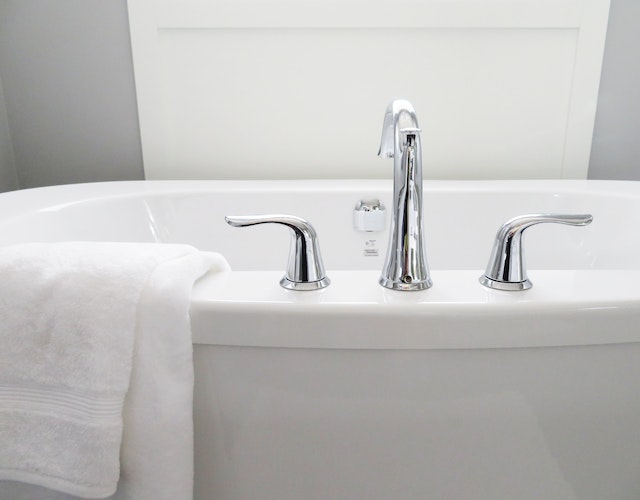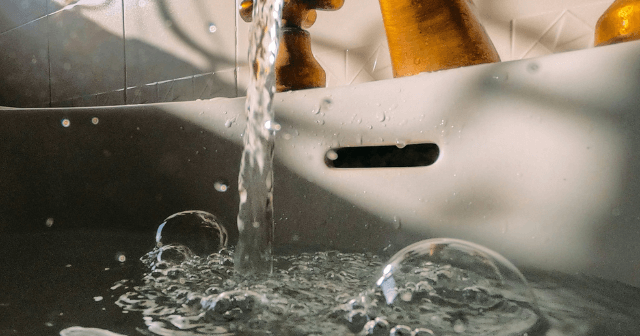Signs of Mold in Your House
 Household mold is one of the most frustrating side effects of water damage in your home. When moisture has collected somewhere in the building, especially in a darker environment, mold spores can quickly develop. This is why it is so important to address water damage as quickly as possible when it occurs. Whether it was caused by burst pipes, appliance leaks, rainwater, clogged drains, or broken water heaters, you need to act quickly to prevent mold growth.
Household mold is one of the most frustrating side effects of water damage in your home. When moisture has collected somewhere in the building, especially in a darker environment, mold spores can quickly develop. This is why it is so important to address water damage as quickly as possible when it occurs. Whether it was caused by burst pipes, appliance leaks, rainwater, clogged drains, or broken water heaters, you need to act quickly to prevent mold growth.
The Perfect Environment for Mold
Unfortunately, parts of your home can be ideal locations for various molds to develop. If there is high humidity in a space due to nearby water, as well as low levels of light, then mold could grow in as little as a few hours. If flooding or a leak occurs in your house and the problem is left untreated, this will inevitably lead to the spread of mold.
Why is Mold Dangerous?
Even a small patch of mold can be harmful to your health and the health of everyone else in the home. Mold can cause respiratory issues such as asthma in more severe cases, but even mild exposure can cause an allergic reaction resulting in watery eyes, itchy nose, skin rashes, and other symptoms. Prolonged exposure can worsen your allergies, causing a more severe reaction the longer the mold is left untreated.
Not only does mold pose a health risk to everyone in the building, but it can also be harmful to your home. It can leave behind an unpleasant musty smell. Mold in your home is a sign of water damage, which means that structural elements near the mold could be absorbing water and warping or rotting as a result. If you notice mold, then this should be a signal to you to check for standing water or leaks. This is why it is so important to remove mold from your home as quickly as possible.
Mold Spores Start Reproducing Quickly
Another reason to address visible mold as soon as possible is because of its reproduction rate. This organism can spread very quickly if left alone in humid environments, causing a widespread mold infestation that may be hard to keep up with.
Signs of Mold Growth in Your Home
Knowing how to detect mold in the house is the first step to preserving the air quality and structural integrity of the building. Here are several warning signs of mold that you need to be on the lookout for, particularly if you have recently suffered from water leaks.
Musty Smell
As mentioned before, you can smell mold in the air if there is enough of it in the house. The odor itself is very musty, smelling earthy or like damp socks. If you encounter this smell in your home, you should start keeping an eye out for a mold problem.
Warped Walls
When you notice that certain structural elements in your home are warping, such as walls, floors, or other materials, this is probably a sign of damage from water and could indicate the presence of mold.
Peeling Paint
When paint is exposed to moisture for a long period, it can begin to peel. When you notice a patch of peeling paint on the walls or ceilings that is new, you should check the nearby area for water damage and indoor mold.
Persistent Cold or Cough
Since a mold issue affects the air quality of the home and can cause health problems, ongoing sicknesses could be an indication of mold exposure. If you notice that you or your family have been coughing a lot recently, or a cold has persisted, it may not be because of the weather or normal bacteria. Instead, it may be the result of mold growing in your house.
Spotted Clothing
Clothing can also carry signs of mold. Fluffy or slimy spots on clothes could indicate that there is mold in your home. Wet clothing that is left untended for a while can be a common culprit in the development of mold.
Water Stains
Discoloration on your wall, ceiling, floor, or other material could be a sign of a leak, and therefore, an indication of potential mold. If your drywall or other building material displays water stains, then you should check for mold problems near the affected area.
Most Common Types of Mold
There are a few common types of mold that are most likely to be found in your home. Alternaria is frequently found in damp areas indoors. Stachybotrys, which often looks like black mold, occurs in laundry rooms, basements, and on wet carpets. Aspergillus is a mold that can grow on damp walls, leaf piles, or compost piles, and is frequently connected with lung health issues.
What to do About Your Mold Problem
So you have ordered a mold inspection and have discovered that there is an infestation in your home. Now what? How do you return your home to a mold-free environment that ends your family’s exposure to this allergen and improves the air quality in the building? When mold issues arise, the problem needs to be taken care of quickly and efficiently to reduce the possibility of health problems and long-term damage to your home and possessions.
A Restoration Company Can End Mold Exposure
Hiring Portland mold remediation services can end your mold problem. If you suspect mold has gained a foothold in your house, then calling a professional mold remediation company to get rid of the infestation should be your first step.
With high-quality equipment and the right detection tools, these restoration specialists can perform an effective treatment plan to remove mold from every surface in your home and check for additional moisture that may form the ideal environment for further mold spores to grow.
If you notice the signs of mold allergies in you or your family, or you suspect mold may be present in the home, it is time to take action. If you cannot locate the harmful mold yourself, schedule a mold inspection appointment and then have a remediation service tackle the project as quickly as possible. Trust the professionals to remove the mold in your house, preserving the air quality and structural integrity of the building.


